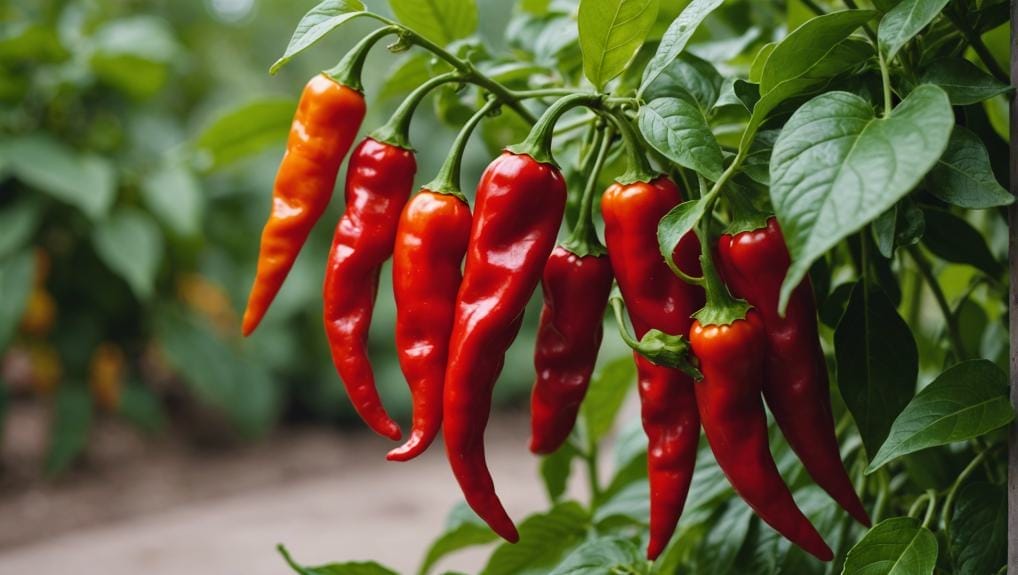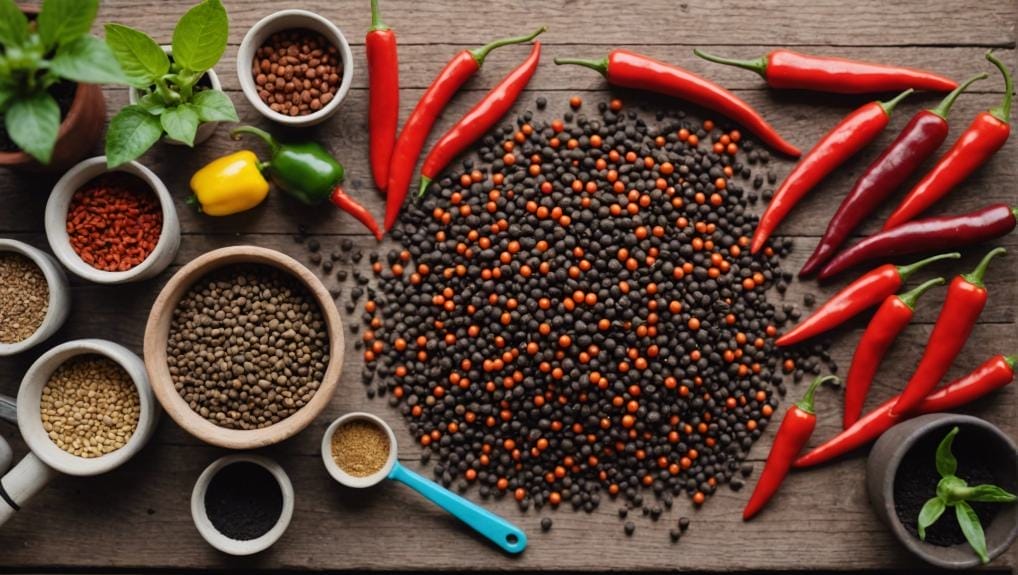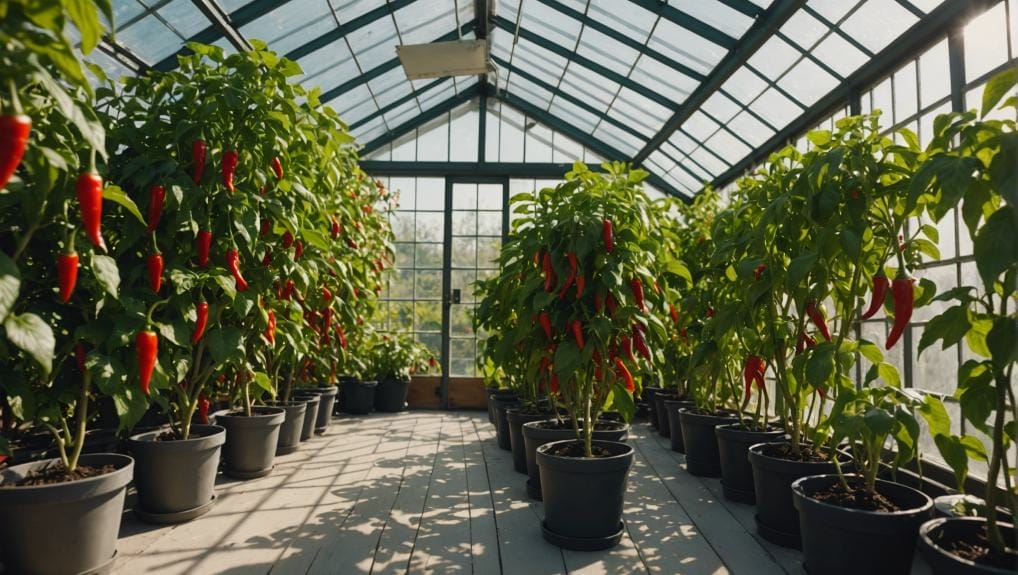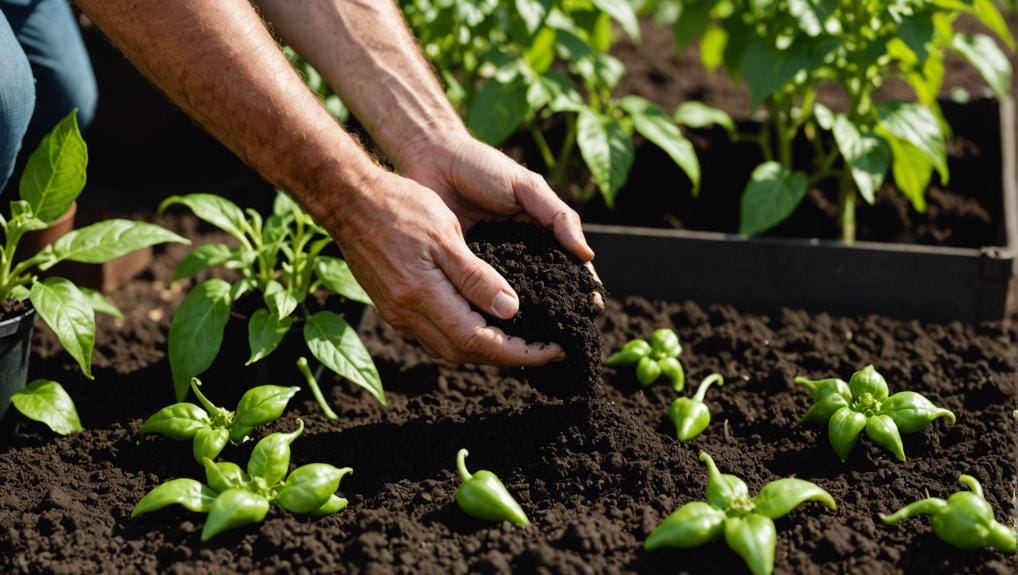To cultivate thriving hot pepper plants, ensuring the right soil conditions and fertilization regimen is crucial. Achieving the ideal pH levels and providing a balanced mix of nutrients are fundamental steps to kick-start your pepper-growing journey. But there’s more to uncover beyond the basics that can truly elevate your harvests. Stay tuned to discover the lesser-known yet essential tips that can make a significant difference in the health and productivity of your hot pepper plants.
Soil Testing for Optimal Ph
To ensure your hot pepper plants thrive, start by testing your soil’s pH level. The pH level should ideally fall between 6.0 to 7.0 for optimal growth.
If the pH strays from this range, it can affect the availability of essential nutrients like phosphorus, calcium, and potassium, crucial for fruit development. Nutrient deficiencies due to improper pH levels can stunt root system growth and overall plant health.
Identifying if your soil is acidic, neutral, or alkaline through testing will guide you on necessary amendments. Adjusting the pH based on test results is vital to prevent issues such as nutrient deficiencies or toxicities in your hot pepper plants.
Regular soil testing is key to ensuring a balanced soil environment that provides the best conditions for your hot pepper plants to thrive. Remember, a well-balanced pH level sets the foundation for healthy plant growth and abundant fruit production.
Nitrogen-Rich Fertilization for Growth

Ensure your hot pepper plants thrive by providing them with nitrogen-rich fertilization for optimal growth and lush foliage. Nitrogen is essential for promoting vegetative growth in pepper plants, helping them develop strong stems and vibrant leaves.
To meet this need, consider using organic nitrogen sources such as compost, manure, or fish emulsion. These natural options can enhance soil health and provide a steady release of nutrients to support your pepper plants’ development.
However, be cautious of excessive nitrogen application, as it can result in overly lush foliage at the expense of fruit production. Striking a balance is crucial to prevent this issue and ensure your plants receive adequate but not excessive nitrogen for optimal growth.
Transition to Phosphorus-Rich Fertilizer
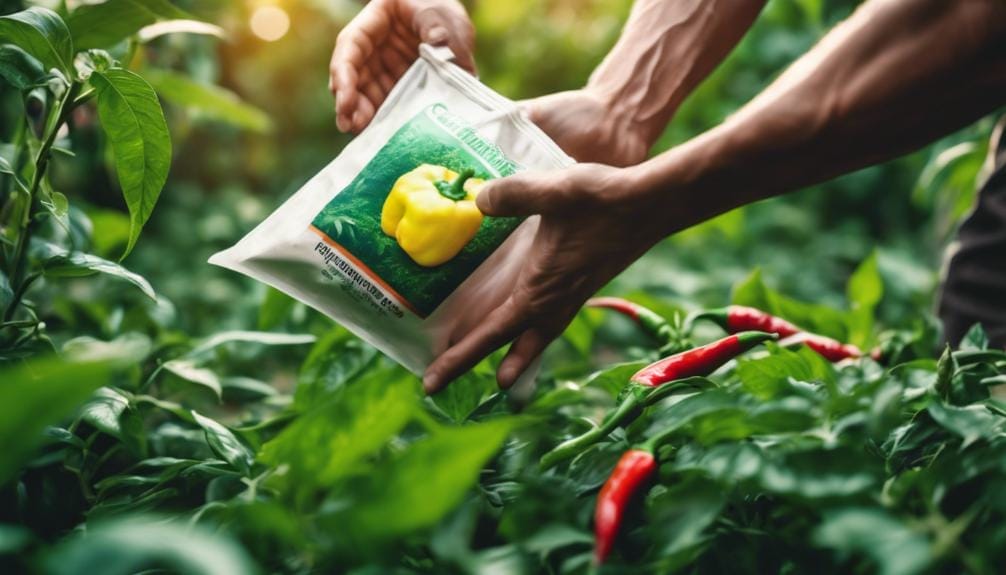
Transitioning to a phosphorus-rich fertilizer around 4-6 weeks into growth is crucial for promoting flower and fruit development in your hot pepper plants. Phosphorus plays a vital role in fruit formation and flower development, making it essential for maximizing your pepper yields.
By using a fertilizer with a higher phosphorus content, you support the transition from the vegetative stage to the reproductive stage in your hot pepper plants. Neglecting to provide sufficient phosphorus can result in stunted growth, delayed maturity, and decreased fruit production in your hot pepper plants.
To ensure a balanced nutrient profile, incorporating phosphorus-rich fertilizers is key to supporting healthy growth and achieving abundant harvests of hot peppers. Remember, the right amount of phosphorus at the right time is crucial for the overall success of your hot pepper plants.
Continuous Feeding Every 2 Weeks
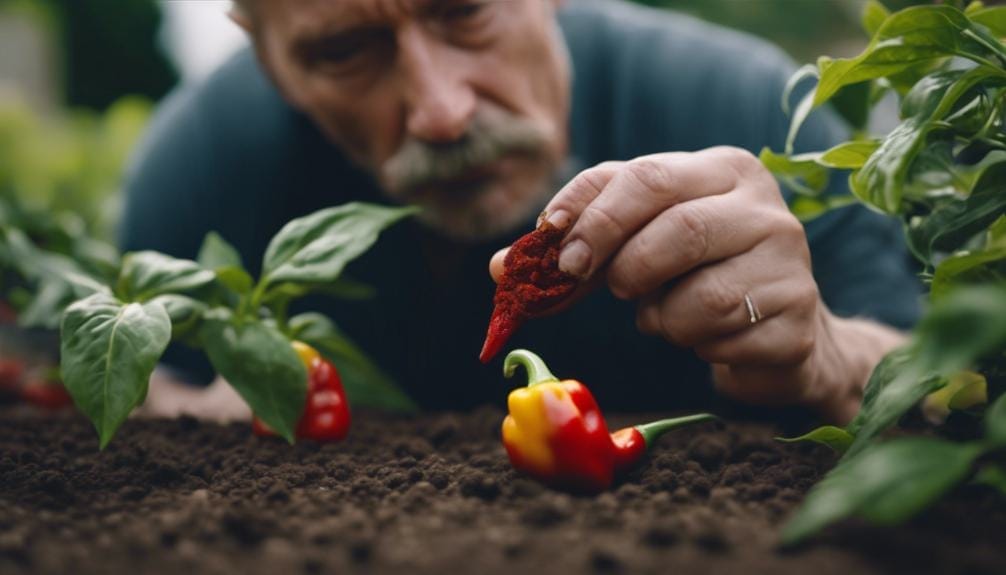
For optimal growth and fruit production, maintain a continuous feeding schedule every 2 weeks for your hot pepper plants.
Fertilizing your pepper plants regularly ensures they receive essential nutrients necessary for healthy foliage, flowers, and fruit development. By adjusting the fertilizer application based on the plant’s growth stage, you can meet its changing nutritional requirements effectively.
Providing a steady supply of nutrients through a consistent feeding schedule is crucial for sustaining the health and vigor of your pepper plants. This approach not only contributes to higher yields but also enhances the overall performance of your plants.
Addressing Nutrient Deficiencies
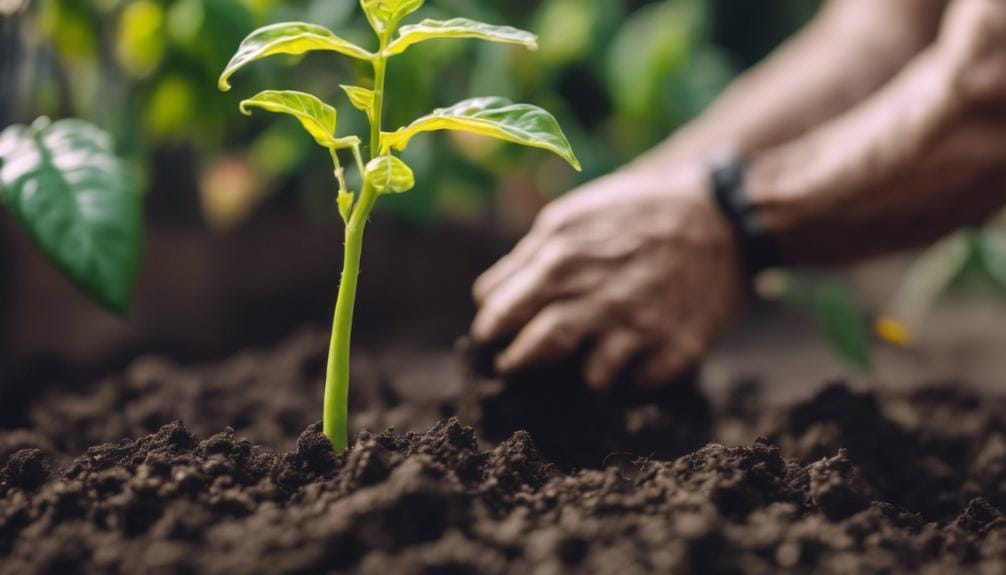
To tackle nutrient deficiencies in your hot pepper plants effectively, prioritize identifying specific issues through a soil test before proceeding with fertilizer applications.
Calcium deficiency can lead to blossom end rot in hot peppers, emphasizing the importance of addressing nutrient imbalances promptly. If a soil test reveals a calcium deficiency, consider incorporating bone meal into the soil to boost calcium levels.
Additionally, deficiencies in phosphorus and potassium can hinder plant growth and fruit development, so ensure your fertilizer contains adequate amounts of these essential nutrients. For magnesium deficiency, applying magnesium sulfate can help maintain healthy pepper plants.
It’s also crucial to monitor pH levels in the soil, as improper pH can impact nutrient availability to the plants. Regularly observe your plants for signs of nutrient deficiencies, such as leaf discoloration, and take corrective actions promptly to ensure optimal growth and productivity.
Preventing Blossom End Rot
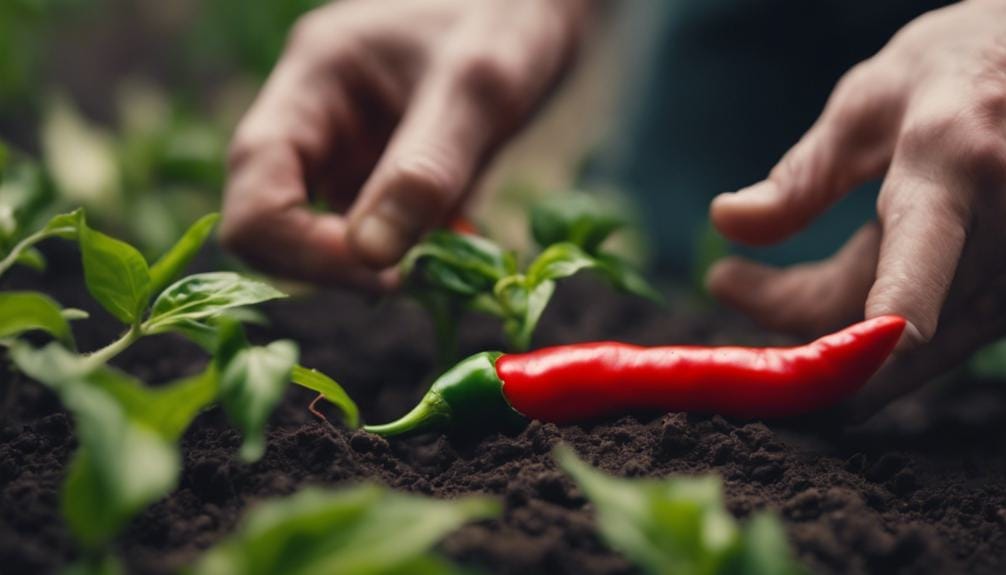
Maintaining consistent soil moisture levels plays a crucial role in preventing blossom end rot in hot pepper plants. Blossom end rot, caused by a calcium deficiency, manifests as dark, sunken spots at the blossom end of the fruit.
To combat this issue, ensure good drainage to prevent waterlogged soil, which can hinder calcium uptake. Additionally, incorporating calcium-rich amendments such as gypsum, crushed eggshells, or agricultural lime can address calcium deficiencies in the soil.
Mulching around pepper plants helps regulate soil temperature and moisture, reducing the risk of blossom end rot. It’s essential to monitor pH levels in the soil, aiming for a range of 6.0 to 7.0, to optimize calcium availability and absorption, further aiding in the prevention of blossom end rot.
Maximizing Yield Potential
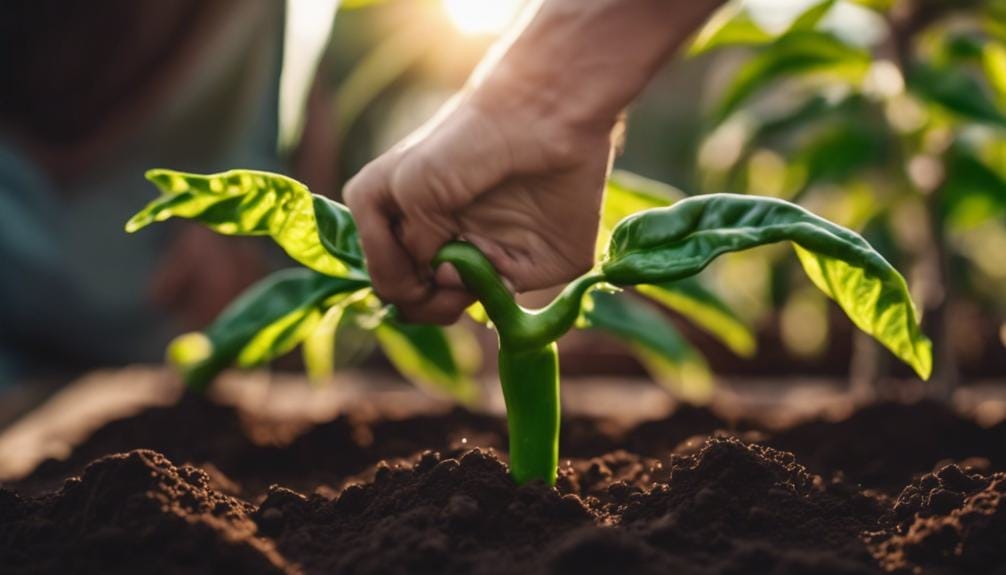
To maximize the yield potential of your hot pepper plants, focus on continuously fertilizing them every 2 weeks for ongoing growth and fruit production. Fertilizing your pepper plants regularly ensures they receive a steady supply of nutrients necessary for robust development.
Adjust the type and amount of fertilizer based on the growth stages of your peppers to promote optimal nutrient uptake and maximize yield. Remember that hot pepper plants can produce fruits beyond the first harvest, especially in suitable climates where they may act as perennials.
Proper fertilization plays a crucial role in enhancing flower formation, fruit set, and overall yield of your hot pepper plants. Regularly monitor soil nutrient levels and pH to fine-tune your fertilization practices, as this will help you achieve the best results in growing peppers and obtaining a bountiful harvest.
Conclusion
In conclusion, by following the 7 best tips for hot pepper soil and fertilization, you can ensure optimal growth and abundant harvests. Testing the soil pH, providing nitrogen-rich fertilization, transitioning to phosphorus-rich fertilizer, and addressing nutrient deficiencies are key steps to prevent issues like blossom end rot and maximize yield potential.
Remember to continuously feed your plants every two weeks to sustain their health and vigor. With these practices in place, your hot pepper plants will thrive and produce bountiful crops.


